A lot of preparedness articles can be a little tough to write, this one was exceptionally difficult to wrap my head around! The subject is things you will regret not having in a SHTF situation, which is by definition things you have forgotten to stock. So, it’s not a standard issue things you should have list. I had to rack the old brain for the critical things that I have often forgotten or postponed in my preparations. So, it may seem a bit of an odd list, but it is a list of essential things that are not “Head Liners” for most preppers.
#1 Antibiotics
Believe it or not, the no. 1 killer in a crisis is almost always a disease. This includes even WWII. So, no matter how many guns or canes you have stockpiled so far… they won’t stop this disease.
And instead of buying 10 types of antibiotics (many having similar substances) you should consider these 4 antibiotics with totally different actions, so if the bacteria is resistant to one of them, you have 4 totally different “solutions” to try.
#2 Knowledge and skills
This is always the most important thing to stock up on. You can have all the goods and goodies in the world, but if you can’t use them they are worthless. You should gather a wide range of knowledge on subjects such as gardening, food preservation, foraging for local edibles and medicinal, home repair, DIY projects, sewing, leather work, first aid, and the list goes on. In times past, everyone had a smattering of this type of knowledge as a matter of course, but our modern lives have become very compartmentalized and most of the compartments are of little use in a world turned upside down. Learn all you can, practice all you can, and gather as many knowledge resources as you can
Related: You Pass by This Plant Everyday Without Knowing How to Use It When SHTF
#3 Toilet Paper! – Critical supply
There are alternatives to this modern staple, but most of them are varying degrees of uncomfortable! The trouble with toilet paper though is that it is bulky to store, the bonus is that as long as you keep it dry it stays good for a very long time. Put up as much as you can find room for, buy in bulk when you find it on sale. Chafing and rashes are never fun, but you really don’t want to deal with them in the apocalypse!
#4 Salt
It seems silly, but salt has a multitude of uses. You can use it in standard fashion to season your food, you can use it in pickling vegetables and drying meat, you can use it as an attractant for wild game, as a supplement for live stock, to make a mouth rinse. It is cheap, compact, and it lasts a lot longer than you will! The shelf life of salt has yet to be determined since none of it has ever gone bad!
#5 White Vinegar
Yet another highly versatile product with a long shelf life. Also relatively inexpensive to buy in quantity. Vinegar too is useful in pickling and food preservation, is a great cleaning product, and has a multitude of other food preparation uses. Here are other 20 foods that will outlast you.
#6 Fire Extinguishers
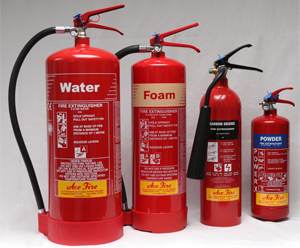 At the end of the world, fire stations will probably not be operating as they are now. This is compounded by the fact that we will be using fire for a lot more things. Candles, oil lamps, cooking fires, wood heat, all in play a lot more than they are these days. No matter how safe you are, it is an imperfect world and things happen. Be ready to deal with fire quickly and decisively. Get a bunch of extinguishers in a variety of sizes, and when you are using fire for heat, light and cooking keep a few in every room of the house and include large industrial sized ones in addition to the more compact models.
At the end of the world, fire stations will probably not be operating as they are now. This is compounded by the fact that we will be using fire for a lot more things. Candles, oil lamps, cooking fires, wood heat, all in play a lot more than they are these days. No matter how safe you are, it is an imperfect world and things happen. Be ready to deal with fire quickly and decisively. Get a bunch of extinguishers in a variety of sizes, and when you are using fire for heat, light and cooking keep a few in every room of the house and include large industrial sized ones in addition to the more compact models.
#7 Strike Anywhere Kitchen Matches
In keeping with our fire is important theme, you will need a way to start fires. Lots and lots of fires. Ferro rods, blast matches and all that are fine, but for convenience around the house nothing beats good old fashioned wooden kitchen matches. As a bonus they are cheap, compact to store, and will last as long as you can keep them dry. They would be great for barter someday too.
#8 Candles
Candles could well be a primary source of lighting some day. You can’t stock too many. They have a near infinite storage life, and can be had very cheaply, watch the sales and clearances and put up as many as you can manage. They, too, could have a great deal of barter value one day.
Related: Dipping Candles the Old-Fashioned Way
#9 Sponges and Steel Wool
Odds are fairly good that you won’t have as much water to devote to the purpose and there will be a lot more scrubbing as a result. Sponges, steel wool, Brillo pads and the like will wear out a lot faster in these conditions, but a dirty dish related case of food poisoning will be a very bad deal in the absence of modern medical facilities. These things are cheap, compact, and readily available these days, so put up as much as you can.
#10 Fertilizer and Pest Control
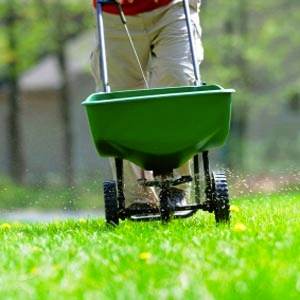 Gardening will become a crucial activity. Right now, a garden that fails because of a pest infestation is only a bummer, when the SHTF it could mean a lot of serious hunger. Make sure that you have the ability to deal with any threats to your garden, and the ability to feed your plants for optimum production. How you feel about Natural and Organic can inform your choices in these areas, but I would rather eat fresh veggies that were not strictly speaking “organic” than have nothing to eat. Some of these dietary preferences may become luxuries you can no longer afford, but the good news is there are a lot of great natural products available so you don’t have to turn yourself over to chemicals.
Gardening will become a crucial activity. Right now, a garden that fails because of a pest infestation is only a bummer, when the SHTF it could mean a lot of serious hunger. Make sure that you have the ability to deal with any threats to your garden, and the ability to feed your plants for optimum production. How you feel about Natural and Organic can inform your choices in these areas, but I would rather eat fresh veggies that were not strictly speaking “organic” than have nothing to eat. Some of these dietary preferences may become luxuries you can no longer afford, but the good news is there are a lot of great natural products available so you don’t have to turn yourself over to chemicals.
Related: Living From a Small Piece of Land in Tough Conditions
 #11 Cleaning Products
#11 Cleaning Products
I can’t stress enough the importance of keeping your surroundings as sanitary as possible! Illnesses that are common annoyances today could be life threatening events at some point. Lots of Clorox, ammonia, Pine Sol, Lysol, and the like are a critical supply, but not exciting enough to jump to the front of the mind. Don’t ignore them in your preps.
#12 Heavy Blankets
Lots of heavy blankets! You will probably not be able to keep your home as warm in the winter as you do now, and you may end up with more guests than you are counting on. Piling on the blankets can be a life saver in a pinch, or just a cozy indulgence, but comfort is always a valid consideration.
#13 Cook Ware
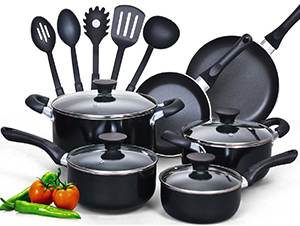 Cooking habits will most likely change in a long term crisis situation. You may find yourself cooking fewer dishes but in larger quantities, feeding passersby and friends that wander in, or who knows what. Large stock pots that are heavy enough to use on a fire, lots of cast iron including Dutch ovens, a big Cowboy coffee percolator for the fire, and so on. Don’t forget to learn how to use this gear before you need it!
Cooking habits will most likely change in a long term crisis situation. You may find yourself cooking fewer dishes but in larger quantities, feeding passersby and friends that wander in, or who knows what. Large stock pots that are heavy enough to use on a fire, lots of cast iron including Dutch ovens, a big Cowboy coffee percolator for the fire, and so on. Don’t forget to learn how to use this gear before you need it!
#14 Pet Meds
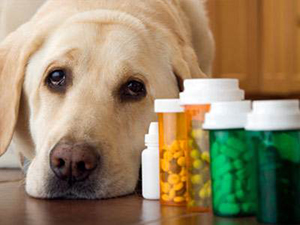 At my farmstead, the dogs are more than just pets, they serve a purpose as well. My dogs serve to protect the chickens and their eggs, as well as the gardens, from marauding critters. They also are a big part of the alarm and security system. Just like human doctors, veterinarians will not be available when things get bad. You are going to want to keep your furry partners in good health too. With that in mind, store as much Advantage or other flea and tick preventative as you can, Also lay in a store of heart worm preventative, and make sure they are up on their shots. For horses keep wormers on hand, as well as first aid supplies for all critters. If you keep horses, learn as much as you can about hoof care and keep the needed supplies in stock.
At my farmstead, the dogs are more than just pets, they serve a purpose as well. My dogs serve to protect the chickens and their eggs, as well as the gardens, from marauding critters. They also are a big part of the alarm and security system. Just like human doctors, veterinarians will not be available when things get bad. You are going to want to keep your furry partners in good health too. With that in mind, store as much Advantage or other flea and tick preventative as you can, Also lay in a store of heart worm preventative, and make sure they are up on their shots. For horses keep wormers on hand, as well as first aid supplies for all critters. If you keep horses, learn as much as you can about hoof care and keep the needed supplies in stock.
#15 Pet food
Your critters need to eat too, so don’t neglect their needs when stock piling food. If you don’t, your pets will prove to be a drain on your other food stocks.
Well, there it is! Not as interesting as many survival lists, I know! Not a cool or glamorous item in the bunch! But, survival is just life under extreme circumstances. All the needs you have today will still be there. Guess the point is to not lose focus by concentrating on the fun stuff because the mundane will have even greater significance should things go south.
You may also like:
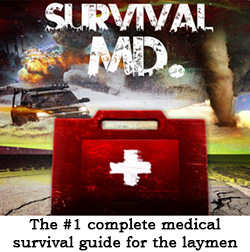 The Only Form of Communication After T-SHTF
The Only Form of Communication After T-SHTF
Setting Up Home Defenses – The Right Way (Video)
5 Best Countries To Move To Before SHTF

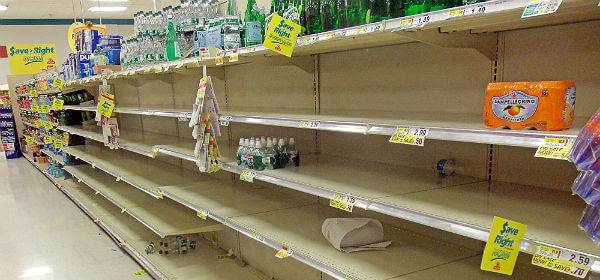
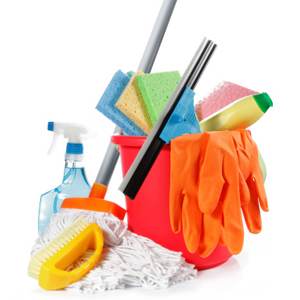 #11 Cleaning Products
#11 Cleaning Products









I recently purchased 32 pounds of iodized salt in individual packages for personal use and trade stock. I added four boxes of meat rub. (For trade as I have no livestock (and know I can’t count on large game animals for very long) Any thoughts / suggestions are welcome.
hey, Jess, good move, salt will be a valuable trade commodity. If I may suggest, store that salt away carefully, not so much as for the sake of the salt, but for the sake of your other items in close proximity to it. Canned goods will rust out fairly quickly if stored in the same room as salt that is not sealed in a plastic or aluminum container. Also, through a leeching process of elements, the salt will eat its way through a metal container. The salt (sodium chloride) works like a sponge drawing moisture from the surrounding air, and then it will off-gas chlorine causing rust to form on metal surfaces. Best of luck to you on your endeavors to prepare for what we know is coming.. Brum
A good storage container for salt (and black pepper) is the 500 ml. soft drink bottles. Rinse them well and dry them completely inside before using them. pour salt into the bottles and seal them tightly. I am going to try the 2 liter bottles to store sugar the same way.
It is not recommended using iodised salt for curing meat. Don’t ask me why, please .
My I recommend adding non-iodized/pickling salt. Home canning might be an option you may wish to consider. Iodized salt is not recommended for this process.
Excellent suggestion. Kosher salt is an option here too.
This might sound crazy but for a cheap but reliable meat supply might I suggest either New Zealand white or Californian meat rabbits for me being a kid that is only 16 or if maybe you are an older person that can not take care of a whole field of livestock rabbits are a good and fast source of meat plus they are really cheap to care for
Rabbits aren’t a good meat source. They have zero nutritional value, no fat or calorie content. If you eat a lot of rabbits, you won’t be hungry,they will fill your belly but you would still be starving to death,losing nutrients and calories. You’re better off eating cats and dogs (seriously, not even joking a little bit ).
They have low calories, but not “zero nutritional value”. They do have protein. So, combined with low protein high carbohydrate items like edible plants or from your garden, it can provide the protein which is so lacking from most plant sources.
But your point is well taken — people have starved to death on rabbit-only diets in survival situations..
That may be accurate if you’re talking about wild rabbit. Fortunately, domestic rabbit is a decent nutritional choice.
not very smart are you.
Yes, rabbit has very little fat. However, rabbit as a 1-2 times a week item is a good deal. Also they will eat weeds. They eat what you cannot and make protein out of it. Don’t speak bad about my rabbits. They aren’t bad as trade goods wither. also they are silent, and the end product is the best fertilizer, no need to compost.
You not too bright, sorry. Fact is Rabbit meat is good for you… Rabbit meat is relatively low in fat; each 3-ounce serving has 6.8 grams of fat, which accounts for 37 percent of the calories. Compared to beef and pork, rabbit is the clear choice — 3 ounces of beef has 18.3 grams, and 3 ounces of pork has 8.2 grams. Low in Sodium. It is also a good source of Niacin, Iron, Phosphorus and Selenium, and a very good source of Protein and Vitamin B12
This is absolutely false. Look it up.
Good idea! Think Great Depression and pre/post WW2. I am not that old, but parents and grandparents were. Aahh, tbe stories. Beans and more beans. Want meat? Butcher a rabbit. No refrigeration? Doesn’t matter, no leftovers. Meat wasn’t an each night fare. Having a rabbit to butcher once a week is a piece of cake. It comes down to breeding and management. A trio. 2 does and a buck. Keep in separate pens. Figure the timing to go through eating a litter of rabbits. Breed the female. 28-30 days later, presto! New bunnies. 4 weeks to wean. 10 weeks to processing. And, can feed grass and plants.
everyone suggests I store antibiotics. However they never say how to acquire them. Any suggestions?
Look into fish antibiotics. As I understand it they are the same antibiotics that are used for people. But you can legally get them without a prescription. Before purchasing do some research to make sure you don’t get anything that might harm your health or be illegal.
A good online vet supply of fish antibiotics is Lambert Vet Supply. I have gotten several fish meds from them and used them and had no problems with them. They are also more reasonable price-wise than some of the other sites.
Also, colloidal silver stops infections. Available in liquid & ointment form at good health food stores or Infowars store
Look into essential oils…..there are many blends and single oils that serve this purpose. We rarely use pharmaceutical antibiotics now, at my house. We use exclusively essential oils…..especially Tea Tree and Frankincense
.
Thank you…I also use ,high quality, essential oils more often, And, colloidal silver. Organic coconut oil.
There is a great website called “Bioticscare” that has any antibiotics you will ever need, purchased legally as aquatic antibiotics. Exactly the same as what you are looking for. I’ve used them with great results
I have been looking for this website and can’t find it. Are you still ordering from there or have you ordered recently and if so can you give the full website name. Thanks
Ebay sell just about every antibiotic as a fish antibiotic. They are exactly the same as human antibiotics. Just type in the name of the kind you want or type fish antibiotics and you can purchase what you want. The ones from other countries take much longer to get here.
I bought a package of antibiotics from Antibioticsforsurvival.com They came in the original manufaturers bottles just like the ones at the back of your pharmacy. 6 different antibiotics and 5 courses of each one (except the z-packs where it was 3 courses) for a cost of $279. Seemed like a good deal to me.
Check out Camping Supplies .com for anti-biotics
That Web site is taken down as of September 2016. No indication what happened. Says the URL/Domain name is for sale.
the URL campingsupplies.com did not work
There are some online pharmacies that you can order from. There are also a host of natural remedies that function as antibiotics, in less extreme cases anyway.
I live close to the Mexican Border. You can get antibiotics there and carry them across to the USA. However, you can only bring a 3 month supply across at a time.
I would love to know the answer to your question too
Try http://www.fishmoxfishflex.com they have antibiotics for fish, dogs and birds. Here is another tip: You know the $700 epi pen problem>? Get a friend that has a farm to order you a 50 ml bottle of epinephrine for $15.95. It is for animals but my good friend who is a fireman/EMT says it is the same mix at 1:1000. Be sure to have them order you syringes as well. Figure this would be a great item to put in your emergency kit. My friend also told me how to give a shot for this: pinch the skin and put it in at 45 degrees. Having this in your kit could definitely save a life.
Start storing oregano in oil form. Natural antibiotic.
I’ve commented to you on related opinions before. Again, candles pop up on a list to have. I’ve indicated that most people alive today don’t know how to behave around candles and open flame. In this twenty first century, with led lighting and solar chargers, there is no reason to keep such a dangerous fire hazard near your family. Please teach your family, and yourself, how to manage heat sources and fire. Then you will also not need the fire extinguishers. If you don’t know how to use them, really know how, you are just going to become a victim.
My wife and I go to a lot of yard sales. This is a great way to stock up on candles, cheap !
I agree, no candles for light. But cooking is likely to involve fire (such as a camp stove) in a low-tech situation, so the fire extinguisher seems like a very good idea to me.
I made my own from empty Mandarin Oranges cans and have a small supply of sand and small decorative rocks to put the candle inside of a pan or bowl of sand for added safety. They need to be sat down low in order to get much light out of them but the shiny can helps reflect the light and they were very cheap to make. (I too buy candles from yard sales, closeouts after holidays, etc.)
If you put candles in front of a mirror, you will greatly increase the light they put out. Works with lanterns or any light source
A decent suggestion is to buy some of the solar path lights from the garden section of WalMart or similar store. They’re anywhere from a dollar each and up. Set them in the sun all day, then bring them in and put them in vases at night. No flame or added heat, which is a plus during hot weather!
I have an autistic child in my home NO CANDLES!! Flashlights only with rechargeable batteries
If I may nitpick #12, heavy blankets. In place of a heavy blanket I much prefer a down comforter. They are lightweight and warm you more quickly than a heavy blanket. They are pricey however, they can be as much as $175.
You can use movers blankets. 72×80 half inch thick. The big blue moving pads the moving companies use to wrap furniture with. You can buy a pack of twelve for about $100. You can use them as a blanket,damp or dry. They’re designed to wick moisture and dry quickly, fire resistant and mold and mildew resistant.
Use them as bedding/padding . Use for material for heavy curtains, sound proofing. Easy to sew to make a larger cover. Lots of uses. Cheap to buy and last a long time.
As long as you’re stocking up on TP (Item #3), we might as well stock up and store containers of petroleum jelly to use to prevent/ soothe the chafing/ rashes that may develop under less than ideal sanitation conditions. Might as well also stockpile antibacterial cleansing wipes or liquid to use pre- and post-potty visits. Might as well stockpile boxes of nitrile exam gloves (Costco pharmacy dept.) to keep hands as clean as possible under these same difficult sanitation circumstances. Then, as with the TP, hope you don’t run out of any of these items before you can re-supply.
What no one ever mentions, feminine products. Pads can also double as gauze. When there is no more, gets more problimatic.
I only buy TP by the case from Amazon. I never go below 3 cases
Okay, I am all for buying strike-anywhere matches. The only ones I can find are Uco and they are poor substitutes for the strike-anywhere matches of my youth. Any suggested sources for real strike-anywhere matches?
Farm supply stores. I get them at Orscheln Farm and Home.
You might try to store strike anywhere matches in something like glass jars…Mice are attracted to the minerals and sulfur they contain, and in nibbling, they could very easily strike one in your cabinet!! 0_o
I would add talcum powder, baby powder, and desitin to the list of items. For personal use, medical purposes and trade goods. People would give their 1st born for powder or paste to stop an ungodly rash or serious chaffing. 😉
As to an emergency baby bottom powder substitute-browned white flour. My Grama lived through the Great Depression and this is what she learned raising her babies in a poor household. Take regular white flour and brown in a heavy iron skillet. Get it browned but not burned. Let cool and put in a tight container. When needed, use just like regular baby powder. It was cheaper for me to use at the time. I’d use a grease of some sort-mineral oil, desitin, petroleum jelly, bag balm (my favorite). In a pinch I’ve used lard, butter, margarine, Crisco, just in a emergency case like camping or just being broke. Clean diaper area, put on lubricant of choice, then sprinkle on the browned flour. It really works. My daughter was soothed from a very bad rash. Thx Grama.
Be sure to get the corn-starch based powders- NOT talcum which has been shown to cause cancer. It’s a cousin to asbestos, I understand…
Iodized salt is not recommended in canning because it causes the liquid in the jar to become cloudy and discolored. Best to use pickling and canning salt for that, otherwise stock up on Himalayan salt. I buy kosher salt, 16 ounces at the dollar (tree) store for $1….you can get some really good prepping items there. A few items each time you go in, & before you know it, you have a stockpile.
Smart & Final Iris on the Left Coast sell bulk salt, iodized, non-iodized and kosher. It’s the cheapest you can buy salt. Costco also sells bulk salt same items at similar prices. Then store it in 2-liter soda bottles. I like seltzer water, personally and they make great storage containers. Seal the cap on with that tape that sticks to itself when it is stretched. Seltzer water is just plain tap water with carbon dioxide dissolved in it, so you don’t have to worry about getting the sugar out as with ordinary carbonated soft drinks.
Salt has many uses but the primary point that no one ever says is that you will die without salt. It is a critical nutrient. So stock more than you think you will need because now our food is saturated in it.
A great item to store is coin tissue. It’s a little compressed disk of viscose rayon that when you add 10cc of water, alcohol, cleaning solutions, etc. it expands and opens. Works wonderfully for wash cloths, hygene, cleaning, etc. They are reusable also for cleaning and wash cloths. Many great uses and is inexpensive and space saving. Perfect in a bug out bag or purse. I use them everywhere since finding them. I order from Amazon in small boxes of 500 or 1000. Love them!
Solar lights as mentioned above are a great cheap item. We use them at our house for night lights when the grandson is over.
I picked mine up at the dollar store.
Also and I will be trying this on my next day off. I think that the AAA batteries can be taken out used in something else then reinstalled to charge.
How would you stay warm when you can’t bug out. I live in an apartment. No heat electricity water.
How would you stay warm with no heat electricity in apartment. I have no where to go and no one to go with. I want to hook up with other Patriots. I know what’s going on in this country and world.
Shannon Clark, I live in cold country. Every now and then the power goes out for DAYS. A couple years ago, there was an unbelievably bad storm that blew for days. Think -20°F with 60 to 80 mph winds.
Anyway, those with generators could power heaters, fridges, freezers, some lights, etc, on a rotating basis. Dangerous if you live in an apartment due to exhaust fumes.
So, with that not an option for everybody, people got creative and after the storm abated they all shared their stories on a local FB page when the moderator asked how they all did it. LOTS of tips and advice were shared.
A couple that stood out in my mind, for your particular situation, were:
1. Set up a small free-standing camping tent in an inner room (more insulation). The smaller the room and tent, the better, if you are alone. Less area to try to warm with candles, bodyheat, etc.
2. Lay on a blowup mattress or pile of blankets, raised up off the floor in your tent, to stay warmer.
3. Get some little cheapy fleece blankets to line a sleeping bag or emergency blanket. Trust me. Fleece is KING for staying warm when it’s cold (inside your bed, your clothing, etc)
4. Buy LOTS of blankets and layer yourself, on the top and bottom of your sleeping pallet, mattress, etc. Wool blankets are best BETWEEN layers because they don’t seal in heat well, but add a nice insulating layer. [Best layering: Fleece against your body, a quilt on top, a wool blanket next, another quilt or sleeping bag, etc. Top it all off with an emergency blanket to reflect heat back at yourself and zip up the tent!]
5. Wear a wool (or fleece) stocking cap (or balaclava), even to bed. 50% of your body heat is lost through your head.
6. Wear fleece (or woolen) socks and mittens. A further 25% of your body heat is lost through the extremities.
7. Pets, like dogs and cats, can add to your bodyheat supply, especially in the tent.
8. If the outage and the cold go longer and you just want to warm the space up, here’s a tip: a large UNGLAZED terracotta planter, turned upside down, placed on 3-4 bricks inside of a large metal cookie sheet (for clearance and fire safety), can have 3-5 lit candles underneath it that will eventually warm the terracotta up nicely. The terracotta will then radiate heat and warm up the ROOM. Caution: This is a short term solution ONLY due to oxygen concerns. Keep the candles lit only until the terracotta gets hot and the room gets warmer. Even after you blow out the candles, the terracotta will continue to radiate heat for a while. Repeat as needed. Also, if you have pets, consider a baby gate for surrounding and protecting the ‘terracotta firepit’ from getting knocked over.
These are just a few suggestions. There were DOZENS upon DOZENS of really clever ideas that people used to get by, depending on their resources and circumstances.
As for no water and no cooking, stock up on a couple cases of bottled water (or 2, maybe 3, 5-gallon aquatainers filled at all times, refreshed once a week in winter) and pop-top canned soups that you can warm up over a candle.
The storm in question happened in Wasilla, Alaska in 2021. You get the idea.
Just a note about scrubbing dirty pots and pans – When I have gone camping and forgot to take a scrubber along, I have reached down to the earth, pulled up a small clump of grass or plant material with sand or grit on the roots, and used that as a scrubber. It works in a pinch.
Antibiotics often just make the problem worse as most bugs are now resistant to them. Use instead oregano oil, diluted, colloidal silver, or any number of organics that have antibacterial properties. Just do a search for them, there are many.
You can get bulk salt online 55# bags, 14 # bags, and buckets of salt. I’m not sure if putting oxy absorbers is a good idea, some have said it will make it hard as a brick….I just put it in 5 gallon buckets inside a clean pillow case and seal.
White vinegar is usually made with petroleum. Opt for one that says GRAIN on it. You can also make your own apple cider vinegar or even wine vinegar using a bit of the ACV or wine vinegar as a starter.
For cleaning, you can clean almost everything with baking soda, vinegar, washing soda, (just bake baking soda to make washing soda), hydrogen peroxide, citric acid, even rubbing alcohol (get the 91%) a bit of soap (you can make your own easily with lye…it takes some education on how to use, but beneficial for making your own soap) Just FYI: adding vinegar and soap together cancels each other out…so just don’t mix the two.
For the blankets, you can also get some great deals on wool blankets from a military surplus store. They will usually smell of moth balls, which is toxic, but a few days hanging in the sun will remove that. You can wash wool, just you can’t DRY it in a dryer. So, soak it if you need to, and hang in the sun until dry. I did that with one wool blanket from the army surplus store that was really smelly from moth balls.
Nice post. Thank you